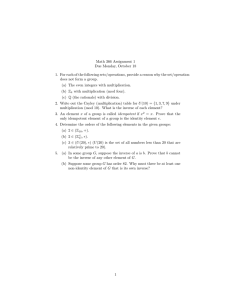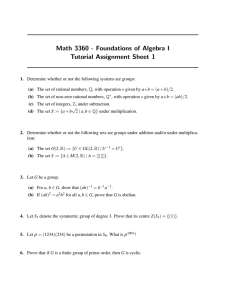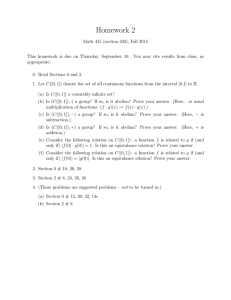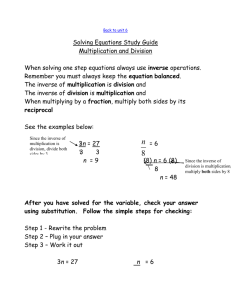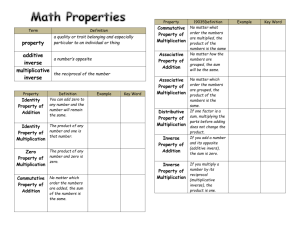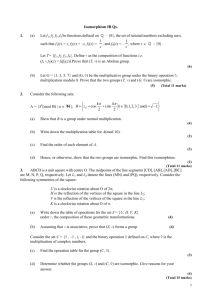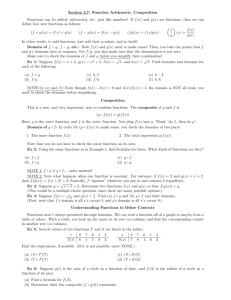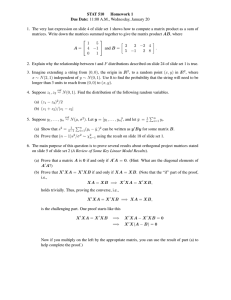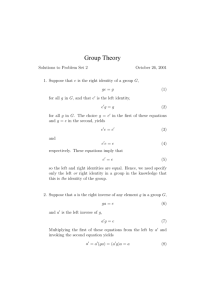Selected answers from Practice problems – Chapter 3
advertisement
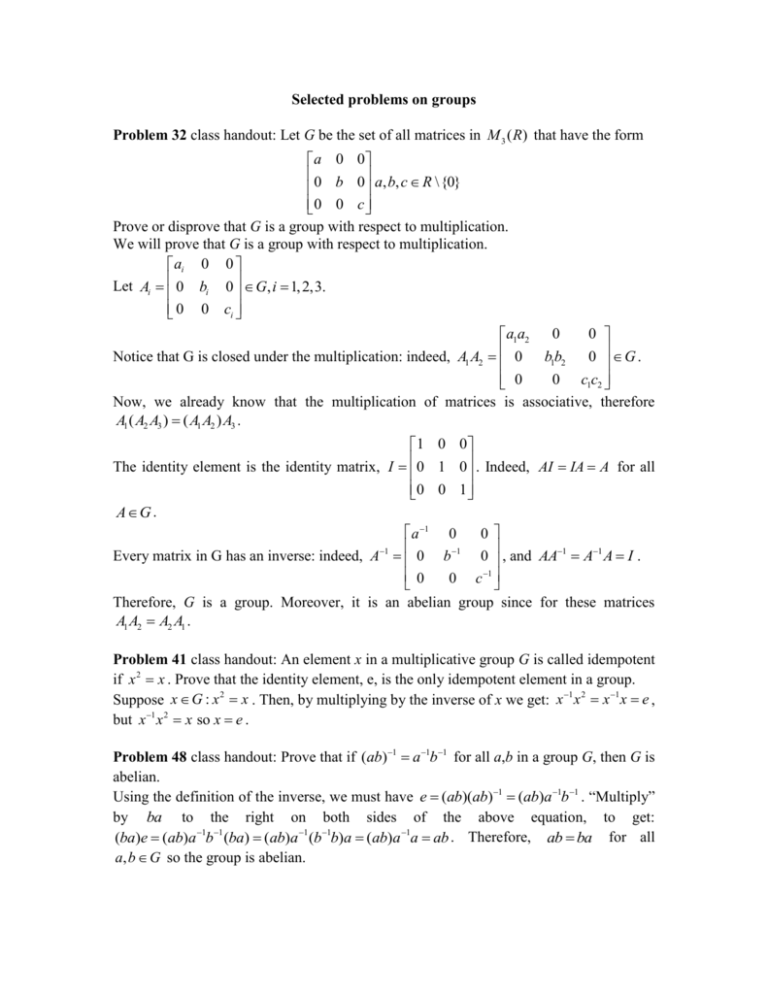
Selected problems on groups
Problem 32 class handout: Let G be the set of all matrices in M 3 ( R) that have the form
a 0 0
0 b 0 a, b, c R \{0}
0 0 c
Prove or disprove that G is a group with respect to multiplication.
We will prove that G is a group with respect to multiplication.
ai 0 0
Let Ai 0 bi 0 G, i 1, 2,3.
0 0 ci
0
0
a1a2
Notice that G is closed under the multiplication: indeed, A1 A2 0 b1b2
0 G .
0
0 c1c2
Now, we already know that the multiplication of matrices is associative, therefore
A1 ( A2 A3 ) ( A1 A2 ) A3 .
1 0 0
The identity element is the identity matrix, I 0 1 0 . Indeed, AI IA A for all
0 0 1
AG .
a 1 0
0
1
1
0 , and AA1 A1 A I .
Every matrix in G has an inverse: indeed, A 0 b
0
0 c 1
Therefore, G is a group. Moreover, it is an abelian group since for these matrices
A1 A2 A2 A1 .
Problem 41 class handout: An element x in a multiplicative group G is called idempotent
if x 2 x . Prove that the identity element, e, is the only idempotent element in a group.
Suppose x G : x 2 x . Then, by multiplying by the inverse of x we get: x 1 x 2 x 1 x e ,
but x 1 x 2 x so x e .
Problem 48 class handout: Prove that if (ab)1 a 1b1 for all a,b in a group G, then G is
abelian.
Using the definition of the inverse, we must have e (ab)(ab)1 (ab)a 1b1 . “Multiply”
by ba to the right on both sides of the above equation, to get:
(ba)e (ab)a 1b1 (ba) (ab)a 1 (b1b)a (ab)a 1a ab . Therefore, ab ba for all
a, b G so the group is abelian.
Problem 14 (Nicodemi): Let G be a group and let g G . Let Tg : G G be the function
defined by Tg ( x) gx .
i) We give all the values of Tg ( x) when G U 8 , g 3 .
x
1 3 5 7
T3 ( x) 3 1 7 5
ii) We prove that Tg ( x ) is a bijection for any group. In order to do so we need to check it
is one-to-one and onto.
We first check it is one-to-one. Let x, y G : Tg ( x) Tg ( y ) . Then gx gy . Since g has an
inverse in G, by multiplying to the left we obtain: g 1 gx ex g 1 gy ey, so x y , and
thus Tg ( x ) is one-to-one.
Now to check it is onto, let y G . We need to find x G such that Tg ( x) gx y .
Multiply again by the inverse of g to obtain: g 1 gx g 1 y, or x g 1 y proving that
Tg ( x ) is onto.
iii) Suppose that an element appears twice in a row of the operation table for G. To be
more exact, suppose in the row of an element g we have ga gb c for two distinct
elements a, b G. Define Tg ( x) gx as above. Then
ga gb c Tg (a ) Tg (b) c , which contradicts the fact that Tg ( x ) is one-to-one.
Therefore, each element must appear exactly once in the table for G.
iv) You try this one!
